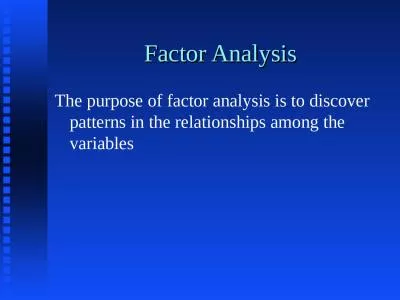PPT-Factor Analysis Liz Garrett-Mayer, PhD
Author : tatiana-dople | Published Date : 2018-09-29
Dept of PHS Division of Biostats amp Bioinf Biostatistics Shares Resource Hollings Cancer Center Cancer Control Journal Club March 3 2016 Motivating Example Goals
Presentation Embed Code
Download Presentation
Download Presentation The PPT/PDF document "Factor Analysis Liz Garrett-Mayer, PhD" is the property of its rightful owner. Permission is granted to download and print the materials on this website for personal, non-commercial use only, and to display it on your personal computer provided you do not modify the materials and that you retain all copyright notices contained in the materials. By downloading content from our website, you accept the terms of this agreement.
Factor Analysis Liz Garrett-Mayer, PhD: Transcript
Download Rules Of Document
"Factor Analysis Liz Garrett-Mayer, PhD"The content belongs to its owner. You may download and print it for personal use, without modification, and keep all copyright notices. By downloading, you agree to these terms.
Related Documents














